#portsmouth square
Link
A long-desired plan to demolish the pedestrian bridge and overhaul Portsmouth Square received a critical chunk of funding recently.
Construction was anticipated to begin in late 2023, said Tamara Aparton, a spokesperson for the San Francisco Recreation and Parks Department.
Aparton said the financial support will help bring the project to the finish line and ensure Chinatown residents get the “vibrant and modern oasis they deserve.”
If all goes to plan, construction is expected to wrap up in 2025.
0 notes
Video
Portsmouth Square, San Francisco 4/27/22 by Sharon Mollerus
0 notes
Text
LOUIS TOMLINSON FESTIVALS 2024
30 MAR - TEKATE PAL NORTE (Monterrey, Mexico. cap. 80k) Spotify playlist
8 JUN - AWAY FROM HOME (Merida, Mexico. cap 10k+)
22 JUN - PINKPOP (Landgraaf, Netherlands. cap. 70k) Spotify playlist
4 JUL - MAIN SQUARE FEST (Arras, France. cap. 40k) Spotify playlist
7 JUL - RUISROCK (Turku, Finland. cap. 35k) Spotify playlist
21 JULY - MEO MARES VIVAS FESTIVAL (Nova de Gaia, Portugal. cap 30k) Spotify playlist
26 JULY- MORRIÑA FESTIVAL (Porto de a Coruña, Spain. cap. 20k) Spotify playlist
2 AUG - ARENAL SOUND (Castello, Spain. cap. 50k) Spotify playlist
3 AUG - SANTANDER FESTIVAL (Santander, Spain. cap. 15k) Spotify playlist
10 AUG - SZIGET (Budapest, Hungary. cap. 92k) Spotify playlist
16 AUG - FM FREQUENCY (St. Pölten, Austria. cap. 140k) Spotify playlist
18 AUG - CABARET VERT (Charleville-Mézière, France, cap. 90k) Spotify Playlist
23 AUG - VICTORIOUS (Portsmouth, UK. cap. 65k) Spotify playlist
24 AUG - ZURICH OPEN AIR (Zurich, Switzerland. cap 80k) Spotify playlist
6 SEP - LIVE FROM FEST ISTANBUL (Istanbul, Turkey. cap 10k) Spotify playlist
7 SEP - LOLLAPALOOZA BERLIN (Berlin, Germany. cap 100k) Spotify
8 SEP - SUPERBLOOM (Munich, Germany. cap. 50k) Spotify playlist
47 notes
·
View notes
Text

me gazing out at my beautiful New England tour dates, on sale today!
5/3 - Northampton MA* @ The Parlor Room
5/4 - Portland ME @ One Longfellow Square
5/9 - Boston MA @ Red Room at Cafe 939
5/11 - Portsmouth NH @ The Press Room
*Northampton on sale 3/5
tickets: jennyowenyoungs.com/tour
thanks to Lisa Czech Photography for coming to Maine to take this lovely photograph ♥️
10 notes
·
View notes
Text


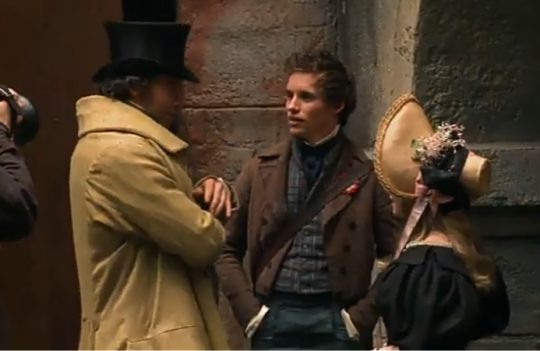

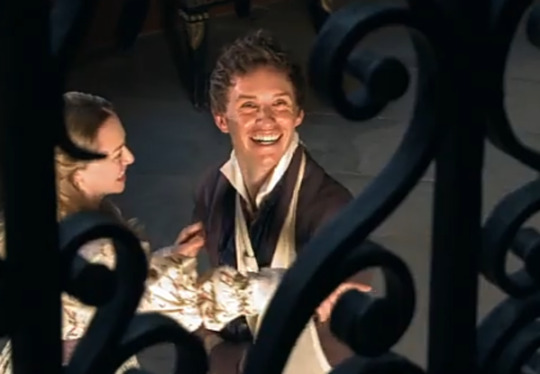


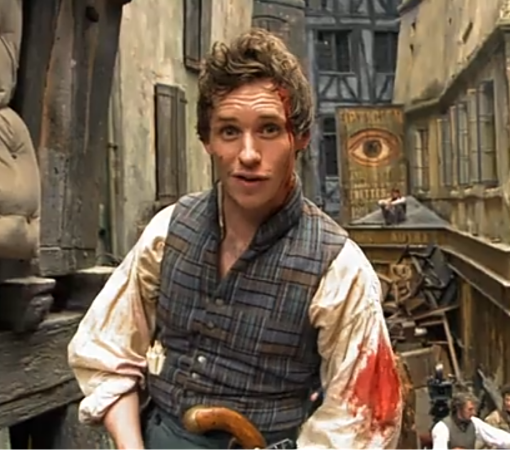
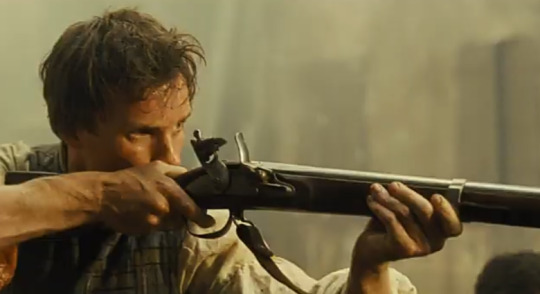

Les Miserables (2012) - Behind the scenes.
🎥 Video posted by Cinema Scope on YouTube
Les Misérables is a 2012 epic period musical film directed by Tom Hooper from a screenplay by William Nicholson, Alain Boublil, Claude-Michel Schönberg, and Herbert Kretzmer, based on the stage musical of the same name by Schönberg, Boublil, and Jean-Marc Natel, which in turn is based on the 1862 novel Les Misérables by Victor Hugo. The film stars an ensemble cast led by Hugh Jackman, Russell Crowe, Anne Hathaway, Eddie Redmayne, Amanda Seyfried, Helena Bonham Carter, and Sacha Baron Cohen.
Set in France during the early nineteenth century, the film tells the story of Jean Valjean who, while being hunted for decades by the ruthless policeman Javert after breaking parole, agrees to care for a factory worker's daughter. The story reaches a resolution against the background of the June Rebellion of 1832.
Following the release of the stage musical, a film adaptation was mired in development hell for over ten years, as the rights were passed on to several major studios, and various directors and actors were considered. In 2011, producer Cameron Mackintosh sold the film rights to Eric Fellner, who financed the film with Tim Bevan through their production company Working Title Films. In June 2011, production of the film officially began, with Hooper hired as director. The main characters were cast later that year. Principal photography began in March 2012 and ended in June. Filming took place on locations in Greenwich, London, Chatham, Winchester, Bath, and Portsmouth, England; in Gourdon, France; and on soundstages in Pinewood Studios.
Les Misérables premiered at the Odeon Luxe Leicester Square in London on 5 December 2012 and was released on 25 December in the United States and on 11 January 2013 in the United Kingdom, by Universal Pictures. The film received generally positive reviews from critics, with many praising the direction, production values, musical numbers, and ensemble cast, with Jackman, Hathaway, Redmayne, Seyfried, Aaron Tveit, and Samantha Barks being the most often singled out for praise. However, Crowe's performance as Javert and singing were met with criticism. It grossed over $442 million worldwide against a production budget of $61 million. The film was nominated for eight categories at the 85th Academy Awards, winning three, and received numerous other accolades. Since its release, it has been considered by many to be one of the most famous adaptations of the novel and one of the best musical films of the 2010s and the 21st century.
#my screenshots
#eddie redmayne#eddieredmayne#redmayne#les miserables#marius pontmercy#behind the scenes#december 2012
18 notes
·
View notes
Text



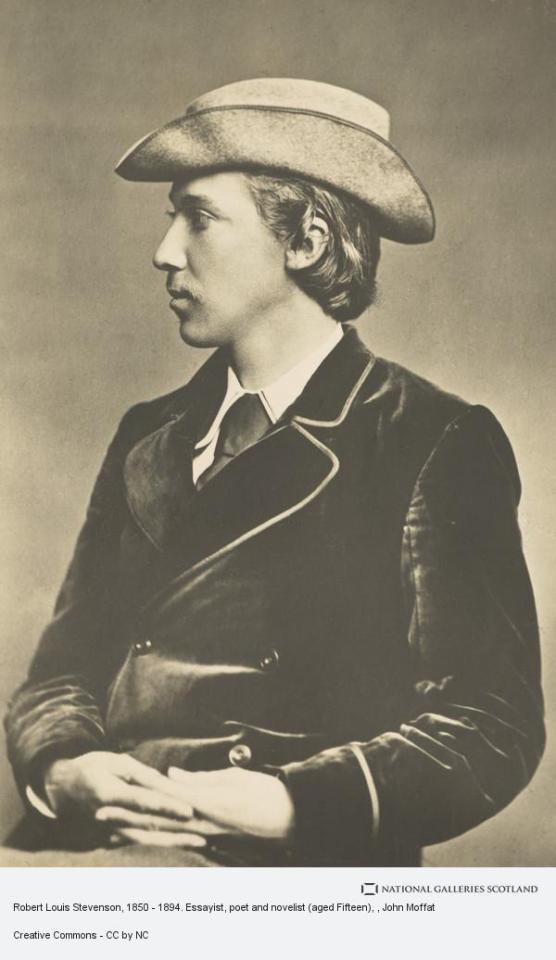
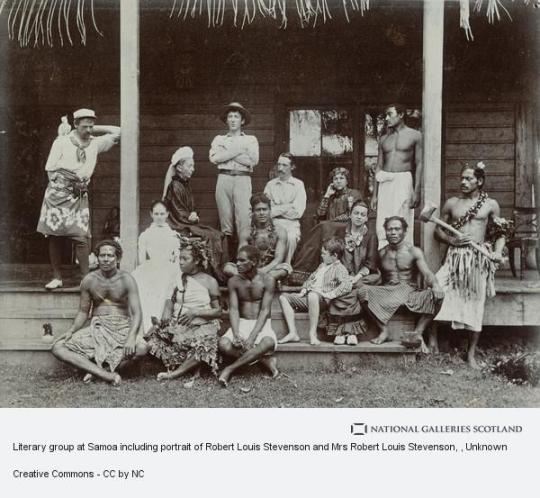
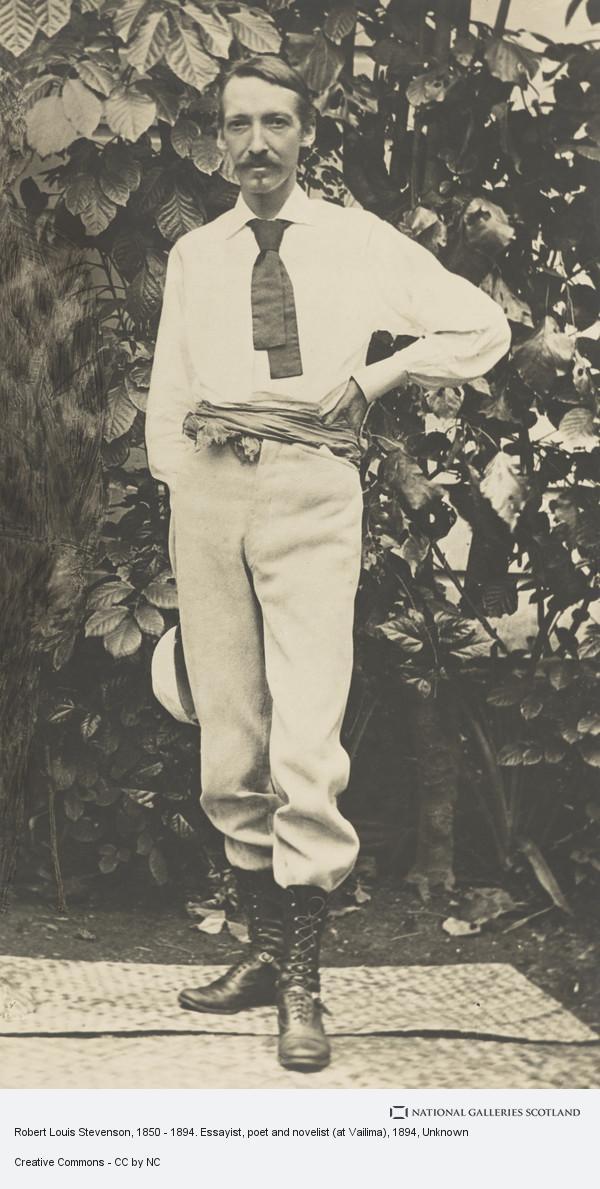

On December 3rd 1894 Robert Louis Stevenson died in Samoa aged just 44.
Born in Edinburgh, Stevenson began writing as a teenager, a passion that eclipsed any desire to become part of the family profession of lighthouse engineering, or the law career he chose and studied but never practised.
Despite frail health due to tuberculosis, Stevenson, who enjoyed a bohemian lifestyle, travelled abroad often, and many of his books were produced during those journeys. He married American Fanny Vandegrift in 1880 and they lived, broke, in California before sailing to Scotland.
Stevenson split his time between Switzerland and Scotland - on medical advice for his ongoing problems with tuberculosis - and during this time began work on his famous novel, Treasure Island, as well as many other published works.
In 1887, by then living in the south of England where he wrote Strange Case of Dr. Jekyll and Mr. Hyde, it became clear Stevenson’s health could not cope with the climate. He left for New York’s Adirondack Mountains with his wife, mother and stepson where he continued to write and found editors and publishers were willing to offer lucrative contracts.
The following year, Stevenson chartered a yacht for a holiday on the seas from which he would never return and which would result in the publication of in-depth insights about the South Seas.
After visiting a number of islands for extended stays, where Stevenson found a great interest in immersing himself in the local lifestyle, they reached Samoa in 1889 for a six-week stay. After a stint in Sydney, he returned to Samoa and set up life in the Vailima house in what is today the Robert Louis Stevenson Museum.
Stevenson became a popular and well-respected member of the community and continued to write, the climate suiting his health, he took the native name Tusitala ("Teller of Tales"), and he quickly became involved in local politics. Convinced that the European officials appointed to rule the Samoans were incompetent, he wrote A Footnote to History: Eight Years of Trouble in Samoa - an account of the grappling between colonial powers for control of the island. The book was so incendiary that it resulted in the recall of two officials from the island, and Stevenson feared for a while that it would result in his own deportation.
On the evening of December 3rd, 1894, Stevenson died very suddenly. He had defied his weak lungs for over 40 years, but in the end it was a brain haemorrhage which killed him. The final words of his unfinished novel were strangely appropriate:
'It had seemed unprovoked, a wilful convulsion of brute nature …'
The first pic is of Nantoki, FannyStevenson, Natakauti and RLS a picture called Island Characters. Even in this warm climate, however, Stevenson continued to suffer with his health, and throughout adulthood did much of his writing from his sickbed. In the second pic he is seen composing music on his flageolet. next is a vintage postcard of Stevenson’s grave and a more up to date pic of the tomb. Robert Louis Stevenson Memorial in Portsmouth Square, San Francisco, and finally Robert Louis Stevenson Memorial. St. Giles Cathedral Edinburgh.
I’ll end this post with the verse Home is the sailor, fourteen years earlier, when he was very ill in California, Stevenson had composed his own epitaph, it is on the plaque on his tomb;
Under the wide and starry sky,
Dig the grave and let me lie.
Glad did I live and gladly die,
And I laid me down with a will.
This be the verse you grave for me:
Here he lies where he longed to be;
Home is the sailor, home from sea,
And the hunter home from the hill.
16 notes
·
View notes
Text


Taking a Bite Out of Pi
Scientists consider about 1 percent of Earth’s 200,000 glaciers to be surging. This type of glacier goes through prolonged periods of quiescence and slow ice flow, when extra ice builds up at high elevations, followed by periods when ice lurches forward in a burst, in some cases flowing 10 to 100 times faster than normal for periods of months to years.
Surges typically begin when excess meltwater builds up along the bottom of a glacier, lubricating the contact area between the glacier and ground and making it easier for the glacier to slide. Though it varies by glacier, surges usually last fewer than two years and occur every 15 to 100 years.
Changes during surges can be dramatic, especially when glaciers flow into the ocean. When this happens, extra water infiltrates the land-ice interface, allowing the glacier to slide even faster, sometimes by tens of meters per day. When surges subside and marine-terminating glaciers enter the inactive part of the cycle, waves and tides can beat back the glaciers as quickly—or even more quickly—than they advanced.
That’s what has happened in recent decades at Sortebræ, a large surge-type glacier in eastern Greenland that drains into a fjord that leads to the North Atlantic Ocean. The pair of Landsat images above illustrates how much the glacier has changed in nearly four decades.
The top image , acquired by the Thematic Mapper on Landsat 5, shows Sortebræ and several of its tributary glaciers in 1986, six years prior to a period of surging. The glacier’s main trunk and its tributaries flowed together into one stream, creating a distinctive shape resembling an icy pi symbol. The lower image, from the OLI (Operational Land Imager) on Landsat 8, shows the same area in 2023, after the tributaries had narrowed their fronts and retreated, taking a large “bite” out of the pi.
Notice the long brown lines running along the length of Sortebræ, which means “black glacier” in Danish. These are lateral and medial moraines—piles of rock and sediment deposited on the edges of the glacier or where the tributaries met. Normally, medial moraine lines follow the path of the glacier; but surging glaciers intermittently flow so quickly that they can form striking bends and kinks called looped, or sometimes bulging, moraines.
“Over time, these moraines got dragged down the glacier to form the characteristic tear-shaped moraine loops visible in the image,” said Hester Jiskoot, a glaciologist at the University of Lethbridge. Another telltale sign that this is a surge-type glacier is the pitted “Swiss cheese” surface visible in the 1986 image, a pitted pattern caused by the filling and draining of small lakes or the closing of crevasses on the glacier surface, she added.
The main branch of Sortebrae surged forward between 1992 and 1995. During this period, the glacier’s front advanced by 10 kilometers (6 miles), and the speed of its flow increased to a maximum of over 20 meters (65 feet) per day. But the advance proved to be short-lived. When the surge ended, the main trunk began losing mass and the glacier front retreated rapidly. “Over the last 20 years, Sortebræ has lost about 40 square kilometers of ice,” Jiskoot said.
Sortebræ is part of a broader cluster of some 130 surging glaciers in this part of eastern Greenland. “While climate change is having a big impact on the rate of glacier retreat in this region, it’s perfectly normal for surge-type glaciers to retreat during their quiescent phase as they build up ice for the next surge,” said Harold Lovell, a glaciologist at the University of Portsmouth. “But surge-type glaciers only occur within certain climate parameters, and we think the magnitude of the retreat is likely enhanced by climate change.”
A 2023 analysis conducted by Lovell and colleagues reviewed decades of Landsat images and tallied 274 surging glaciers in Greenland overall. While the number of surging glaciers in this part of eastern Greenland stayed roughly the same between 1985 and 2019, the analysis showed a reduction in surging activity among glaciers in West Greenland, possibly due to rising summer air temperatures.
“In West Greenland, we’re seeing that some smaller land-terminating glaciers that we know have surged in the past have been unable to surge again,” Lovell said, “likely because they have thinned too much in a warming climate.”
Want more pi in your life? Check out NASA’s Pi Day challenge.
NASA Earth Observatory images by Wanmei Liang, using Landsat data from the U.S. Geological Survey. Story by Adam Voiland.
3 notes
·
View notes
Text
Just Like Comity
Wrote a ficlet to resolve the Scully / Mulder / Detective White arc, because I just can't stand Syzygy and D. White!
Storylink on AO3: LINK Love your comments or kudos!

He grabbed her hand as they exited their hotel.
Damn, it felt good to hold his hand in public.
They’d snuck away, a spring break of sorts to the coast of New Hampshire. Mulder said Portsmouth, at least in photos, had reminded him of Martha’s Vineyard but without the familial baggage.
They had been together for a few months now, but they realized they had both wanted more from their relationship for years. They were making up for lost time and Scully was happy to take a break for a change and just spend time together as two people in love.
“Market Square is just around this corner, according to the map, Scully,” he said, smiling at her and finding her lips in a peck.
“Oh. Sorry,” a voice said, as they bumped into this person on the sidewalk; a pedestrian collision as they’d turned the corner. “Agent Mulder?”
Scully, had been kissing Mulder during the wreck, and was rubbing her sore teeth, but looked up to see none other than…
“…Detective White.” He smiled, “Pleasure to see you.”
“Yeah, it’s great to see you too. It’s Captain now, but you can call me Angela.”
Mulder nodded. “You remember my partner, Dana…Agent Scully.”
“Of course,” White said.
The three of them stood awkwardly for a moment.
“So, Captain?” Mulder said. “Congratulations.”
“Yes,” she sighed, eyeing Scully. “I left Comity and took the position here, in Providence.”
“What are the odds,” Scully sighed under her breath.
She felt Mulder’s hand move to the small of her back and then his fingertips spread out, squeezing the muscles on either side of her spine. She knew he was trying to tell her to settle down. He leaned into her ear and whispered, “We aren’t in Comity and I’m with you, honey.”
She licked her lips and sighed, trying to let go of her jealousy.
White was eyeing the exchange. “Am I making this up, or were you two kissing?”
“Nope, your eyes are not deceiving you,” Mulder replied.
Scully couldn’t help but smile as she looked at her man; so proud to be with her and happy to share it with a woman who once tried to sever their connection.
White laughed and gestured towards them, pointing her finger back and forth and shaking her head.
Scully tucked her face into Mulder’s shoulder so they couldn’t see her roll her eyes.
“What?” Mulder said.
“It’s just…you seemed like you hated each other on that case. Bickering, irritation, rolling eyes at each other. I figured you two had been begging for reassignments.”
Scully laughed.
“Oh, that was the celestial alignment,” Mulder said. “Turns out we’ve been in love for years. There’s no one like her,” he said, gently lifting her chin and pecking her lips again.
Scully stared at him with complete contentment. Her man, fawning over her in the street. God how she loved him.
“Okay…” White shrugged.
“...And um…we’d ask for your discretion,” Mulder said, winking at her, “bureau doesn’t need to know.”
White shrugged and nodded, “I’d never want to stand in the way.”
Scully scoffed, quietly. Mulder nudged her.
“Well…great to see you, Captain White. We are going to check out Market Square. It’s a sneak away vacation for us, so I can’t imagine we’ll cross paths again.”
“Probably not,” she said, leaning in to give Mulder a kiss on the cheek. He allowed it. Scully rolled her eyes as White walked away.
“Just like Comity,” he teased.
“What?” she protested.
“The eye roll!”
Scully smiled wide and confessed, "She called you at the office several times after that case. I deleted the messages."
"Scully. You devious woman," he pulled her tighter into his side.
“The only thing like Comity is a woman is going to mount you tonight, but it’s not going to be her,” she said with venom, “It’s going to be me.”
“And I’ll be a willing participant, honey. Instead of confused.” He paused, “My future is clear as day.”
Scully stood on her tip toes and found his lips and then his tongue, lost in a public display for a moment.
Mulder whispered in her ear, “I loved you then, I just didn’t know what to do about it.”
She playfully grabbed his ass, “I did too. That’s why I got so pissed off,” she grabbed his shirt in her hands, "and why I deleted the messages," she grinned.
Mulder grabbed her hand even tighter and pulled her towards a farmer’s market booth adorned with fresh flowers, saying out loud to himself, “What should I get for the love of my life?”
#today in fic#todayinfic#today-in-fic#the x files#dana scully#fox mulder#msr#detective white#syzygy#RST
30 notes
·
View notes
Text
youtube
Discover TCee's New World: The Save File - Evergreen Harbor
Greetings, fellow Simmers! Join me today as we embark on a journey through Evergreen Harbor in my Family Playstyle Save File.
Nestled amidst the verdant hills of evergreen forests and the tranquil waters of the Willupette Sound, Evergreen Harbor once thrived as the industrial heart of the region. However, as the tides of time shifted, the area has faced challenges in keeping pace with the evolving world. Now, a haven where community bonds and neighborly affection flourish, Evergreen Harbor stands at the crossroads of its destiny, poised to carve out its own future. The question lingers: what path will it choose?
Our expedition commences at Port Promise. Once a bustling trade hub, it now hosts a cluster of residences and establishments that pay homage to its industrial heritage, striving to uphold the local mantra of "Keeping Evergreen Kooky!" Though the bustling port activity has waned, the promise of a brighter tomorrow endures. Within Port Promise, three distinctive abodes beckon: The Old Mill, boasting a rooftop greenhouse; The Portsmouth Promenade, exuding eclectic charm; and The Shipping Views, crafted from ten repurposed shipping containers. At the waterfront community space, one can dabble in fabrication and candle making, or unwind at the local haunt, The Caboose, formerly the train station.
Next, we venture to Conifer Station. What unfolds when the trains cease their rumble? Downtown Evergreen, affectionately dubbed Conifer Station by locals, may echo with a quieter rhythm nowadays, yet its residents fervently attest to a diligent community striving to enhance their slice of paradise. Amidst Conifer Station lie two cozy apartments—Pinecrest Apartment #402 and #403—ideal for small families, along with two homes, one offering a picturesque canal view and the other, Pigulock Manor, a haven of comfort. Sprucewood Square awaits for those seeking activity, whether vending, crafting, or simply mingling with fellow Sims.
Lastly, we journey to Grims Quarry. When prospector Arnold Grims first established his renowned rock quarry in Evergreen Harbor, the emergence of a quaint suburb around it was beyond foresight. Today, nestled beneath the imposing walls of white stone, a snug enclave of residences, apartments, and communal spaces thrives. Among them, two snug apartments, tailor-made for singles or cozy families, stand alongside Rockridge Springs, a modular home fashioned from recycled materials, and Miner Mansion, a spacious abode catering to any family's needs. Don't miss out on exploring The Quarry Building, where gardening, handcrafted goods, and wooden sculptures await your discovery.
#tcee's world#sims#sims 4#sims4#tceesworld#youtube#showusyoursims#showusyourbuilds#tceesnewworld#TCee's Gaming World#tceesgamingworld#Youtube
2 notes
·
View notes
Text
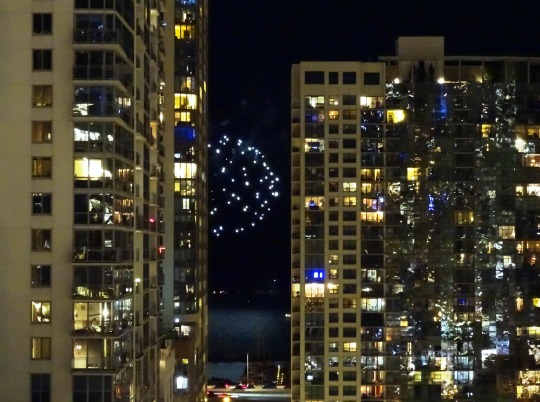








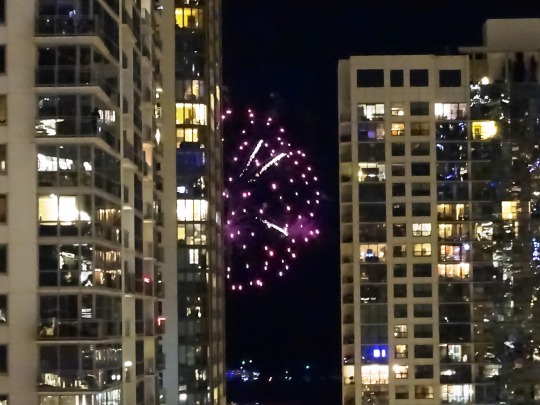


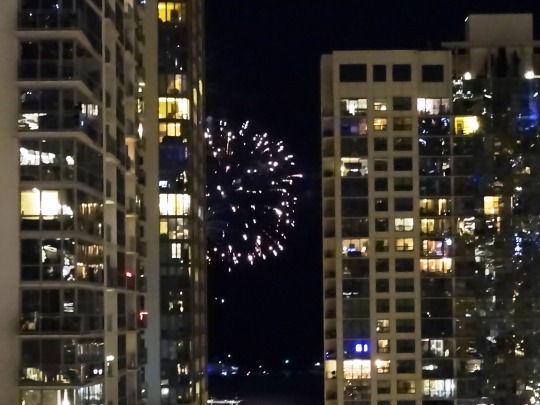
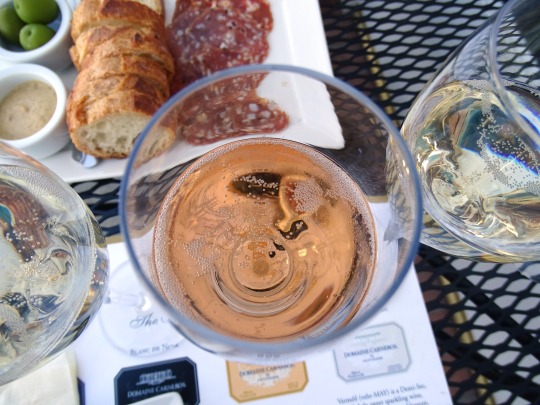



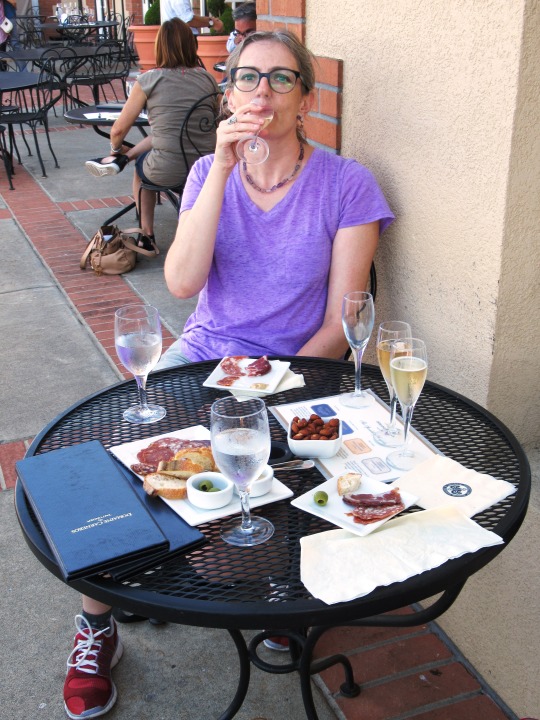



New Year’s Eve
New Year’s Eve takes place on the last day of the Gregorian calendar. The first New Year’s Eve festivities date back approximately 4,000 years, to the time of ancient Babylon; Babylonians celebrated the new year during the first new moon after the vernal equinox, in late March. During antiquity, the first days of the new year were celebrated at different times around the world, and the day was usually tied to an agricultural or astronomical event. For example, Egyptians celebrated their new year as the Nile flooded, and the Chinese New Year has long begun with the second new moon after the winter solstice.
In 46 BCE, Julius Caesar consulted with prominent astronomers and mathematicians, and introduced the Julian calendar, which closely resembles the Gregorian calendar. He made January 1 the first day of the year, partly to honor Janus, the Roman god of beginnings. At the time, the new year was celebrated by offering sacrifices to Janus, decorating homes with laurel branches, the attendance of parties, and the exchanging of gifts. During the Middle Ages, Christian leaders in Europe changed the date of New Year’s celebrations to coincide with religious holidays such as Christmas and the Feast of Annunciation. In 1582, New Year’s was reestablished to follow the Gregorian calendar by Pope Gregory XIII.
In modern times, New Year’s Eve is celebrated in various ways around the world. Many people in Spain and Spanish speaking countries eat a dozen grapes right before midnight, to symbolize their hopes for the following months. Ring shaped cakes and pastries are eaten in some countries, which signify that the year has come full circle. Legumes are eaten in various countries, which symbolize coins, and a hope for financial success in the upcoming year; lentils are popular in Italy, and black eyed peas are a favorite in the southern United States. Other popular festivities that cross international boundaries include the watching of fireworks and the singing of songs.
New Year’s Eve is not a federal holiday in the United States, but it is recognized by some states. Some organizations and stores are closed, offer limited services, or close early; schools are almost always closed. New Year’s Eve events in the United States began to gain prominence in the early 20th century. Many Americans celebrate the day and evening with parties at home and by attending public events at various places and entertainment venues. Often celebrations go long past midnight, into New Year’s Day.
The most prominent public celebration in the United States is the “ball drop” in Times Square in New York City, which has been held each year since 1907, except for a few years during World War II. Celebrations first took place in Times Square in 1904, sans a ball drop. Following the banning of fireworks in 1907, after hot ashes had fallen into the streets, Adolph Ochs, a publisher for the New York Times, wanted to replace them with something. The Times Square ball was inspired by time balls, which signaled to sailors on the seas; sailors set their chronometers after observing time balls with a spyglass. The first time balls were installed in Portsmouth, England, in 1829, and the first in the United States was installed in Washington, D.C., in 1845. The inaugural Times Square ball was made of wood and iron, and was made up of one hundred 25-watt light bulbs. As of 2017, the Times Square ball weighs 11,875 pounds, is twelve feet in diameter, is made up of 2,688 Waterford Crystal triangles, and has 32,256 LED lights. It takes the ball sixty seconds to drop down a seventy foot poll to the top of the roof on One Times Square, where it lands as midnight strikes. Similar events are held in towns and cities around the country. The surrounding geography, culture, and history inspires what is dropped as the new year begins—animals, fruit, vegetables, automobiles, and industrial machinery have all been used. Atlanta has a “peach drop” as Georgia is the peach state; Brasstown, North Carolina, lowers a live possum in a glass enclosure; and Port Clinton, Ohio, drops a six hundred pound walleye.
In 1928, Guy Lombardo and his band, The Royal Canadians, began playing an annual New Year’s Eve event at New York’s Waldorf-Astoria Hotel. Up until 1956 the event was broadcasted on the radio, and from 1956 until 1976 it was broadcasted on television, along with coverage of the ball drop. Lombardo’s group were most known for their playing of “Auld Lang Syne,” which they helped turn into the standard song of New Year’s Eve. “Auld Lang Syne” was a Scottish poem put to paper by Robert Burns in 1788. The melody is from an even older Scottish folk song. The literal translation of the song is “old long times,” meaning something close to “once upon a time.” The song first became used at British and Scottish funerals, farewells, and group celebrations, before Lombardo began playing it in the United States.
“New Year’s Rockin’ Eve” debuted on NBC in 1973, moved to ABC in 1975, and was hosted by Dick Clark for over thirty years. It was Clark’s intention that it would be a younger alternative to Lombardo’s big band music. Central Park’s Midnight Run is another New York City tradition, where fireworks are shot off, and a race around the park begins at midnight. Some other larger cities that now hold large public New Year’s Eve celebrations include Las Vegas, Los Angeles, and Chicago. Major theme parks such as Disney World and Disneyland also hold celebrations.
In the Catholic Church, January 1 is a day honoring the Virgin Mary, where a mass is attended. A vigil Mass is often held the night before on New Year’s Eve. Many other Christian churches have “Watch Night” services, which are services that go past midnight. Attendees give thanks for the blessings of the previous year, and pray for blessings in the year ahead. These services trace their roots back to John Wesley, the founder of Methodism.
New Year’s Eve is being observed today! It has always been observed annually on December 31st.
There are many ways you could celebrate the day and evening. Gather with family or friends at a home, find a public event, or go to an establishment that is having a New Year’s Eve party, where there may be music, dancing, drinks, and food. If you are celebrating at someone’s house, you could bring along a snack or a bottle of Champagne. Watch the ball drop and other coverage of the new year on television, or ring in the new year by setting off your own fireworks and singing “Auld Lang Syne.” If you are feeling more contemplative you could write new year’s resolutions, detailing things you hope to accomplish in the following year, or you could attend a church service or Mass.
Source
#New Year’s Eve#NYE#31 December#fireworks#Domaine Carneros#sparkling wine#don't drink and drive#Napa Valley#USA#Navy Pier Fireworks#Chicago#original photography#summer 2019#Mumm Napa#Champagne#Lake Michigan#California#Illinois#Schweiz#Switzerland#NewYearsEve#happy new year#travel#vacation#tourist attraction
5 notes
·
View notes
Text

An illustration of the lieutenant governor inspecting the class at the Royal Naval College at Portsmouth Dockyard in the early 19th century, from the 1899 book A Sailor’s Life Under Four Sovereigns (Internet Archive), by Admiral of the Fleet Sir Henry Keppel. After serving at sea as midshipmen, these boys would eventually pass for lieutenant in the Royal Navy (hopefully). In his memoir, Keppel described his curriculum as having “in addition to school, French, drawing, and dancing masters, also fencing.”
The student week [at the Royal Naval College] was heavily dominated by mathematics with almost 30 hours’ instruction and considerable evening work. The few contemporary accounts that survive stress the repetitive nature of the work and the requirement to memorise huge amounts of material. Lessons took place in a large single room but each pupil was allocated an individual cabin described as ‘about seven foot square, with a window except for the corner ones, which at the monthly changes were occupied by those who had been oftenest on the black list and did not require daylight’. Cabins could be locked and a degree of privacy, unusual in early nineteenth-century public schools, could be attained. A student writing home in February 1818 noted ‘I have a nice little cabin all by myself and always keep the door locked ... we have coffee and milk for breakfast every morning, very good dinners, also suppers’.
— Harry W. Dickinson, Educating the Royal Navy: 18th and 19th Century Education for Officers
#midshipman monday#midshipmen#royal navy#royal naval college#naval history#age of sail#naval cadet#military history#henry keppel#h w dickinson#educating the royal navy#maritime history#portsmouth
49 notes
·
View notes
Text
Court Circular | 7th March 2023
Buckingham Palace
The King and The Queen Consort today visited Colchester to mark its recently awarded city status and were received this morning at Colchester Castle Museum, Castle Park, by His Majesty’s Lord-Lieutenant of Essex (Mrs Jennifer Tolhurst), the Museums Manager, Colchester City Council (Mrs Philippa Pickles) and the Mayor of Colchester (Councillor Tim Young).
His Majesty, escorted by the Lord-Lieutenant, and Her Majesty, escorted by the Mayor, toured the Museum, viewing artefacts and displays, and meeting members of staff, volunteers and representatives from Colchester Garrison, community groups, local businesses, conservation projects and arts organisations.
The King and The Queen Consort this afternoon visited Colchester Library, Trinity Square, Colchester, and were received by Rear Admiral Roy Clare (Vice Lord-Lieutenant of Essex).
Their Majesties met beneficiaries, volunteers and members of staff from Age UK and the Silver Line at an Afternoon Tea, and subsequently were briefed about the Library’s impact in the community through the Essex Year of Reading.
The Prince of Wales, on behalf of The King, held an Investiture at Windsor Castle this morning.
Kensington Palace
The Princess of Wales, Joint Patron, the Royal Foundation of The Prince and Princess of Wales, this morning held an Early Years Meeting.
St James’s Palace
The Earl of Wessex this morning visited the City of London Academy Shoreditch Park, 40 Hyde Road, London N1.
His Royal Highness, Patron, the National Youth Theatre of Great Britain, this evening attended the “Make A Splash” Gala Dinner at the Londoner, 38 Leicester Square, London WC2.
The Countess of Wessex, Patron, Dystrophic Epidermolysis Bullosa Research Association, this afternoon attended a Lunch at the Landmark Hotel, 222 Marylebone Road, London NW1.
Her Royal Highness, Patron, Vision Foundation, later held a Meeting.
St James’s Palace
The Princess Royal, accompanied by Vice Admiral Sir Tim Laurence, this afternoon attended the Grand Military Meeting at Sandown Racecourse, Portsmouth Road, Esher, and was received by His Majesty’s Lord-Lieutenant of Surrey (Mr Michael MoreMolyneux).
St James’s Palace
The Duke of Kent, Grand Master, United Grand Lodge of England, this evening attended the Board of Grand Stewards Dinner at Brooks’s, St James’s Street, London SW1.
#court circular#princess anne#princess royal#tim laurence#king charles iii#queen camilla#prince of wales#earl of wessex#countess of wessex#duke of kent#british royal family
14 notes
·
View notes
Photo
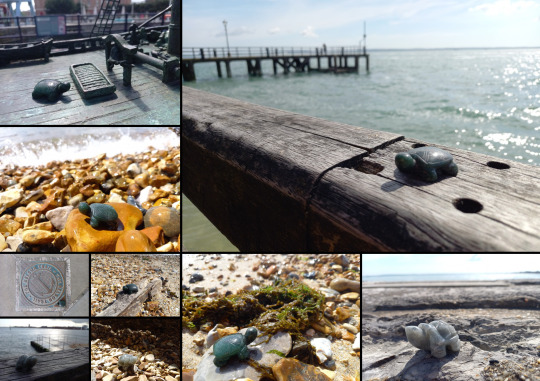
[Collage of a small green stone turtle exploring the seaside - standing on rocks, on a rail overlooking the sea, examining seaweed]
I don’t think I posted my most recent bundle, did I? This one is all Portsmouth - up and down the seafront, mostly on that little strip of beach behind Square Tower. One of my favourite places to visit.
The bundle has already been snapped up to brighten up a couple of desktops, you can join in the tiny adventures here.
6 notes
·
View notes
Text
FITFWT24: MASTERPOST
FASHION
LITHOGRAPHS
PORTRAITS
OUTRO SONGS
TWITTER SPREE 23.1.2024
John Delf/ Sennheiser interview: FITFWT Sound Engineering
FESTIVALS
FITFWT23
ASIA
24 Jan - Bengkel Space SCBD, JAKARTA: video 1, video 2, video 3
AUSTRALIA
28 Jan - Sidney Myer Music Bowl, MELBOURNE (fitfwt24: melbourne)
30 Jan - Riverstage, BRISBANE (#fitfwt24: brisbane)
2 Feb - Qudos Bank Arena, SYDNEY (#fitfwt24: sydney)
TEKATE PAL NORTE FESTIVAL
30 Mar - MONTERREY, MEXICO (cap. 80k) (#fitfwt24: tecate) (PRESS CONFERENCE) MTY 360, Tiempo, El Ambiente, Reforma
IHEART RADIO AWARDS - 1 APR 2023
PRE-TOUR PRESS RUN, LATAM
2 Apr - SÃO PAULO, Brazil: Radio Mix FM, Foquinha, MTV Brazil, CNN Brazil, Capricho, POPLine Brazil, g1, Nickelodeon
4 Apr - SANTIAGO, Chile: Los 40 Chile, CNN Chile, Canal 13, Bio Bio Chile, La Cuarta, Radio Disney Chile, Radio Planeta
6 Apr - BUENOS AIRES, Argentina: Los 40 Argentina, TN La Viola, HeinowPY, MTV Sur, Clarín, Sergio Aguero, TELESHOW, #velez sarafield stadium, Esto es Datta, Tu Musica Hoy, Telenoche, Canal 13, Billboard Argentina, Algos De Musica, Radio Disney LA
NORTHERN MUSIC AWARDS - 23 APR 2023: raffle
LATAM
2 May - Centro de Convenciones Amador, PANAMA CITY
5 May - Coliseo de Puerto Rico, SAN JUAN
8 May - Jeunesse Arena, RIO DE JANEIRO
11 May - Allianz Parque, SÃO PAULO (#fitfwt24: são paulo)
12 May - Ligga Arena Cap, CURITIBA
15 May - Antel Arena, MONTEVIDEO
18 May - Velez Sarsfield, BUENOS AIRES: (#fitfwt24: buenos aires)
21 May - Jockey Club del Paraguay, ASUNCIÓN
23 May - Bicentenario Stadium, SANTIAGO (#fitfwt24: santiago)
26 May - Arena 1, LIMA
28 May - Coliseo Medplus, BOGOTÁ
30 May - Parque Viva, SAN JOSE
1 Jun - Autodrómo Hermanos Rodriguez - Curva 4, MEXICO CITY
4 Jun - Auditorio Josefa Ortiz de Domínguez, QUERETARO
6 Jun - Arena VFG, GUADALAJARA
AWAY FROM HOME FESTIVAL
8 JUN - MERIDA, Mexico (cap. 10k+)
PINKPOP FESTIVAL
22 Jun - LANDGRAAF, Netherlands (cap. 70k): 5:50 PM to 6:50 PM
MAIN SQUARE FEST
4 Jul - ARRAS, France (cap. 40k)
RUISROCK FESTIVAL
7 Jul - Ruissalo Island, TURKU, Finland (cap. 35)
MEO MARES VIVAS FESTIVAL
21 Jul - VILA NOVA DE GAIA, Portugal (cap. 30k)
MORRIÑA FESTIVAL
26 Jul- PORTO DE A CORUÑA, Spain (cap. 20k)
ARENAL SOUND FESTIVAL
2 Aug - BURRIANA, CASTELLO, Spain (cap. 50k)
SANTANDER FESTIVAL
3 Aug - SANTANDER, Spain (cap. 15k)
SZIGET FESTIVAL
10 Aug - BUDAPEST, Hungary (cap. 92k)
FREQUENCY FESTIVAL
16 Aug - ST. PÖLTEN, Austria (cap. 140k)
CABARET VERT FESTIVAL
18 AUG - CHARLEVILLE-MÉZIÈRES, France (cap. 90k)
VICTORIOUS FESTIVAL
23 Aug - PORTSMOUTH, UK (cap. 65k)
ZURICH OPEN AIR FESTIVAL
24 AUG - ZURICH, Switzerland (cap. 80k)
LIVE FROM FEST ISTANBUL
6 Sep - Festival Park Yenikapı, ISTANBUL, Turkey (cap. 10k)
LOLLAPALOOZA BERLIN
7 Sep - Olympiastadion & Olympiapark, BERLIN, Germany (cap. 100k)
SUPERBLOOM FESTIVAL
8 Sep - Olympiapark and Olympiastadion, MUNICH, Germany (cap. 50k)
46 notes
·
View notes
Photo
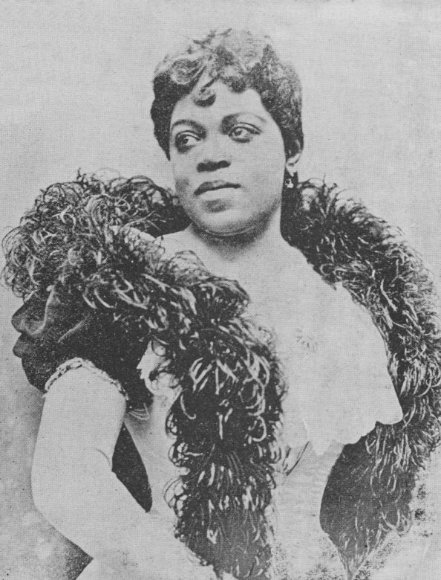

Matilda Sissieretta Joyner Jones, known as Sissieretta Jones, (January 5, 1868 or 1869[1] – June 24, 1933[2]) was an African-American soprano. She sometimes was called “The Black Patti” in reference to Italian opera singerAdelina Patti. Jones’ repertoire included grand opera, light opera, and popular music.[3]
Matilda Sissieretta Joyner was born in Portsmouth, Virginia, United States, to Jeremiah Malachi Joyner, an African Methodist Episcopal minister, and Henrietta Beale.[2] By 1876 her family moved to Providence, Rhode Island,[4]where she began singing at an early age in her father’s Pond Street Baptist Church.[2]
In 1883, Joyner began the formal study of music at the Providence Academy of Music. The same year she married David Richard Jones, a news dealer and hotel bellman. In the late 1880s, Jones was accepted at the New England Conservatory of Music.[1] On October 29, 1885, Jones gave a solo performance in Providence as an opening act to a production of Richard IIIput on by John A. Arneaux‘s theatre troupe.[5] In 1887, she performed at Boston’s Music Hall before an audience of 5,000.[2]
Jones made her New York debut on April 5, 1888, at Steinway Hall.[1] During a performance at Wallack’s Theater in New York, Jones came to the attention of Adelina Patti’s manager, who recommended that Jones tour the West Indies with the Fisk Jubilee Singers.[2] Jones made successful tours of the Caribbean in 1888 and 1892.[1]
In February 1892, Jones performed at the White House for PresidentBenjamin Harrison.[2] She eventually sang for four consecutive presidents — Harrison, Grover Cleveland, William McKinley, and Theodore Roosevelt— and the British royal family.[1][2][3]
Jones performed at the Grand Negro Jubilee at New York’s Madison Square Garden in April 1892 before an audience of 75,000. She sang the song “Swanee River” and selections from La traviata.[3] She was so popular that she was invited to perform at the Pittsburgh Exposition (1892) and the World’s Columbian Exposition in Chicago (1893).[4]
In June 1892, Jones became the first African-American to sing at the Music Hall in New York (renamed Carnegie Hall the following year).[1][7] Among the selections in her program were Charles Gounod‘s “Ave Maria” and Giuseppe Verdi‘s “Sempre libera” (from La traviata).[1] The New York Echowrote of her performance at the Music Hall: “If Mme Jones is not the equal of Adelina Patti, she at least can come nearer it than anything the American public has heard. Her notes are as clear as a mockingbird’s and her annunciation perfect.”[1] On June 8, 1892, her career elevated beyond primary ethnic communities, and was furthered when she received a contract, with the possibility of a two-year extension, for $150 per week (plus expenses) with Mayor James B. Pond, who had meaningful affiliations to many authors and musicians.[8] The company Troubadours made an important statement about the capabilities of black performers, that besides minstrelsy, there were other areas of genre and style.[8]
In 1893, Jones met composer Antonín Dvořák, and in January 1894 she performed parts of his Symphony No. 9 at Madison Square Garden. Dvořák wrote a solo part for Jones.[1]
Jones met with international success. Besides the United States and the West Indies, Jones toured in South America, Australia, India, and southern Africa.[1] During a European tour in 1895 and 1896, Jones performed in London, Paris, Berlin, Cologne, Munich, Milan, and Saint Petersburg.[9]
In 1896, Jones returned to Providence to care for her mother, who had become ill.[1] Jones found that access to most American classical concert halls was limited by racism. She formed the Black Patti Troubadours (later renamed the Black Patti Musical Comedy Company), a musical and acrobatic act made up of 40 jugglers, comedians, dancers and a chorus of 40 trained singers.[2] The Indianapolis Freeman reviewed the “Black Patti Troubadours” with the following: “The rendition which she and the entire company give of this reportorial opera selection is said to be incomparably grand. Not only is the solo singing of the highest order, but the choruses are rendered with a spirit and musical finish which never fail to excite genuine enthusiasm.[10]
The revue paired Jones with rising vaudeville composers Bob Cole and Billy Johnson. The show consisted of a musical skit, followed by a series of short songs and acrobatic performances. During the final third of each show, Jones performed arias and operatic excerpts.[9] The revue provided Jones with a comfortable income, reportedly in excess of $20,000 per year. She led the company with reassurance of a forty-week season that would give her a sustainable income, guaranteed lodging in a well-appointed and stylish Pullman car, and the ability to sing opera and operetta excerpts in the final section of the show.[8] This allowed Jones to be the highest paid African American performer of her time.[8] Jones sung passionately and pursued her career choice of opera and different repertory regardless to her lack of audience attendance.[8] For more than two decades, Jones remained the star of the Famous Troubadours, while they graciously toured every season and established their popularity in the principal cities of the United States and Canada.[11] Although their eventual fame and international tours collected many audiences, they began with a “free-for-all” variety production with plenty of “low” comedy, song and dance, and no pretense of a coherent story line.[12]
Several members of the troupe, such as Bert Williams, went on to become famous.[1] April 1908, at the Avenue Theatre in Louisville, Kentucky, an audience made up mostly of whites (segregated seating was still prevalent), accepted Madam ‘Patti’ after singing ‘My Old Kentucky Home’ with much respect and admiration, and marked “the first time that a colored performer received a bouquet at the theatre in this city”.[12] For almost ten years, racial segregation had kept Jones from the mainstream opera platform, but by singing selections from operas within the context of a hard-traveling minstrel and variety show, she was still able to utilize her gifted voice, that people of all races loved.[12] The Black Patti Troubadours reveled in vernacular music and dance.[12]
Jones retired from performing in 1915 because her mother fell ill, so she moved back to Rhode Island to take care of her. For more than two decades, Jones remained the star of the Famous Troubadours, while they graciously toured every season and established their popularity in the principal cities of the United States and Canada.[12] She devoted the remainder of her life to her church and to caring for her mother. Jones was forced to sell most of her property to survive.[1][2] She died in poverty on June 24, 1933 from cancer. She is buried in her hometown at Grace Church Cemetery.[2]
In 2013 Jones was inducted into the Rhode Island Music Hall of Fame.[13]
Source: https://en.wikipedia.org/wiki/Matilda_Sissieretta_Joyner_Jones
Photos from Wiki Commons
#sissieretta black patti jones#blackherstory#black womens history#lightopera#popularmusic#grandopera
11 notes
·
View notes
Text
Cincinnati Relied On A Time Ball Long Before New York City’s New Year’s Drop
You know the drill – the New Year arrives when the ball drops on Times Square in New York City. It has been a tradition since 1907, and we hardly give a thought to the annual spectacle. It just doesn’t seem like the New Year has been properly announced until we see that luminous ball drop.
No one asks, “Why a ball?” Why not a champagne flute or an avocado? Why have anything drop at all? Why not a bell? Or a skyrocket? Why not a giant calendar page torn away?
The tradition of a time ball goes way back, to the time of the ancient Greeks. The first modern time ball was erected at Portsmouth, England, to help standardize time in the Royal Navy. In England, because the English are just that way, time balls were dropped each day at 1:00 p.m. When the system was imported to America, the daily drop took place at noon.
At that time, there was no standard time. All time was local. So, Cincinnati time was several minutes different from Chillicothe time or Lawrenceburg time. It was not until the railroads lobbied for something resembling standard time that municipalities begrudgingly gave up their own unique time zones.
In Cincinnati, the obvious source of accurate time was our Observatory, originally located atop Mount Adams and later moved to Mount Lookout. Over the years, The Observatory employed various methods to deliver accurate time to the jewelers of the city, who maintained the accuracy of their customers’ watches. The Observatory was the only source of accurate time in Cincinnati until around 1910.
When the Observatory moved into its new facilities on Mount Lookout in the 1870s, Astronomer Ormond Stone had a time ball installed to distribute accurate time to anyone with a view of the hilltop Observatory. The five-foot diameter time ball was mounted on a 60-foot pole behind the Observatory. Each day at 11:45 a.m., the ball was raised halfway up the pole. At 11:55 a.m., it was hoisted to the very top. At noon, the ball dropped back to its base.
Cincinnati’s time ball was used to broadcast precise noon into the mid-1880s. For a while, there was a reciprocal time ball located downtown on the Carlisle Building at Fourth and Walnut Streets, connected to the Observatory by a telephone line.
As electrical connections improved, and as the trees grew up to blanket Mount Lookout, the city’s jewelers found better mechanisms than line-of-sight time balls to spread correct time. The Observatory’s time ball was dismantled, though there is talk of reconstructing it, just for historic interest.
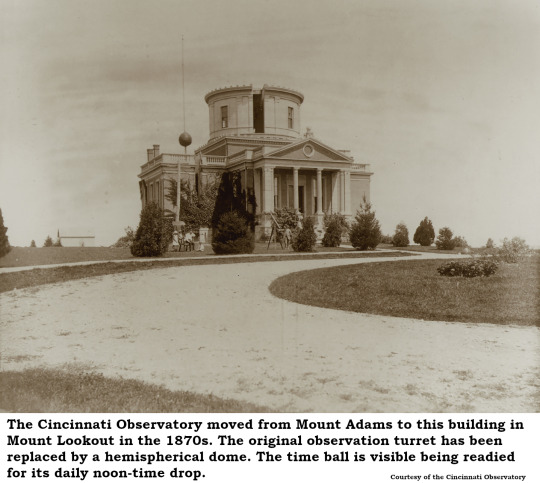
11 notes
·
View notes